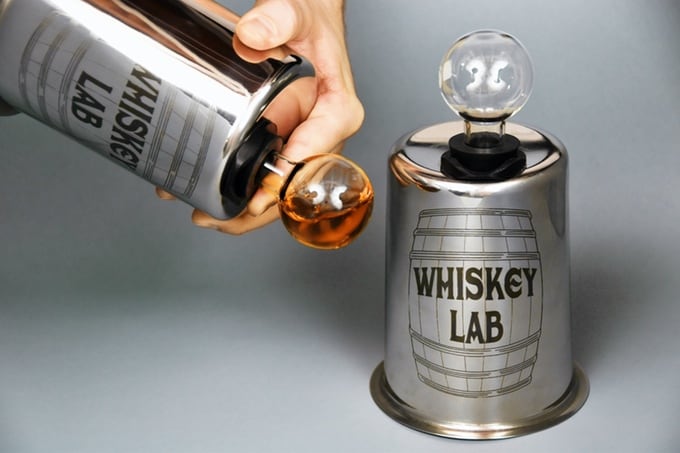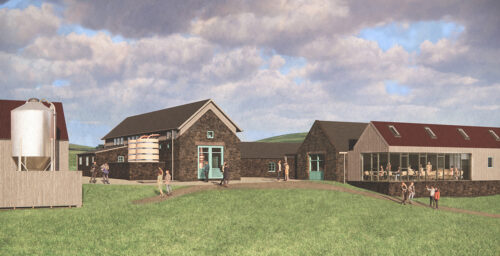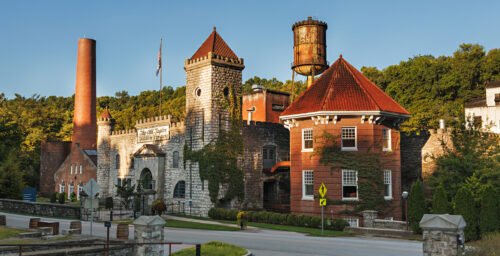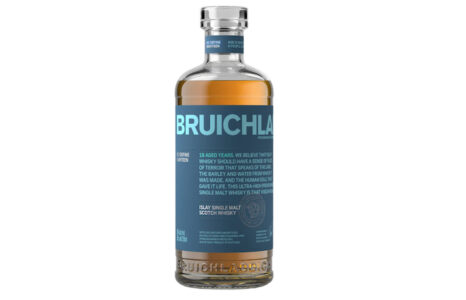“If it ain’t broke, don’t fix it.” Not exactly a motto driving the consumer-facing whiskey accessory market.
The number of rapid-aging, oak-amplifying barrel alternatives claiming to miraculously transform new make or bottom-shelf whiskey into super-aged liquid gold seems to grow daily. Most of these products fail to live up to their claims (or our expectations), but one new invention from Portland-based BRAIN Labs might change all that.
The Whiskey Lab isn’t a rapid aging product. Instead, it aims to precisely replicate the dynamics inside a full-sized traditional oak barrel: low light, regular oxygenation, and a very specific ratio of wood-to-spirit surface area ratio. Now, just like a distiller, you too can wait eagerly for years on end for your whiskey to reach your favorite level of maturation without worrying that it will end up over-oaked or under-oxidized.
The Whiskey Lab product looks a bit like a miniature metal barrel with a light bulb on top. Inside, the whiskey is held in a chamber fitted with a custom-toasted and custom-charred barrel head (available in four toast and three char levels, as well as French and American oak). That barrel head provides the only wood-to-spirit contact in the Whiskey Lab; the rest is made of food-grade molded silicone. On top, a glass bulb lets you view color changes and take samples during the aging process.

Laws and Nameroff say two crucial elements missing from those alternatives are the right ratio of wood to spirit, and the presence of oxygen. “The ratio of wood to spirit is off. You dissolve a lot of wood compounds into spirit, and you don’t get oxygenation. If you put those cubes in a jar and seal it, you might get exchange through temperature and pressure, but you don’t get oxygen moving through the wood. With a small barrel, the proportion of wood to spirit is skewed towards wood, and you get an immediate woody flavor that can mask the subtle spices and sugars. While those solutions colored the spirit and added a flavor, it wasn’t the flavor of a properly aged spirit.”
BRAIN Labs has been working on the Whiskey Lab concept for about 18 months, and now they’ve launched a Kickstarter campaign to get their product to market. If their campaign is successful, they plan to establish their manufacturing facility in Portland, and start exploring distribution partnerships with homebrew stores and other retail outlets.
I have to say, although I’m usually quite skeptical about products that claim to circumvent the need for a real barrel, I’m intrigued by this one. It sounds like a fun learning experience for enthusiasts, particularly those who want to explore the range of flavors imparted by varying toast and char levels as well as experience the changes spirits go through over time. And, if the results are good, I can see similar devices being used by small craft operations as a less-oaky alternative to miniature barrels.








